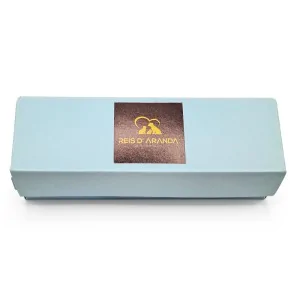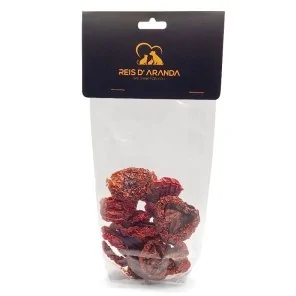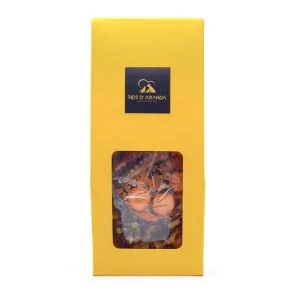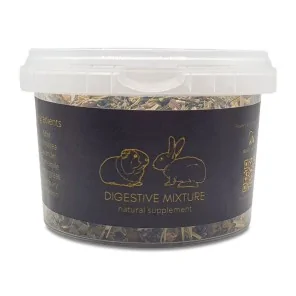The Tornjak originated from genetically homogeneous, almost extinct, indigenous shepherd dogs. These dogs have...
THE VIENNA RABBIT
INTRODUCTION
The name says it all: the Vienna blue rabbit comes from Austria. Not only is it beautiful with its shiny blue-grey fur (the original), but it is also very affectionate. What's more, these cute little ears are also in excellent health.
THE ORIGIN OF THE VIENNA RABBIT
The origins of this breed go back to 19th century Austria. At that time, people did not keep rabbits as pets, but for clothing or food.
The railway official Johann Konstantin Schultz wanted to breed a breed that would offer both. In 1895, he stated his motivation in a magazine for rabbit breeders: ‘The main motive which moved me to create this new species of rabbit was to breed a rabbit which would not only have nothing to envy to the best of its kind, but which would offer twice the economic value for its abundant meat production and its beautiful fur.
The Viennese official used giants from Flanders, belier rabbits and blue rabbits from Lorraine. This is how the Vienna blue rabbit came into being.
In 1903 the first rabbits arrived in Germany and became a very popular economic breed. Today, they are becoming more and more popular as domestic rabbits.
WHAT IS THE VIENNA RABBIT LIKE?
This standard corresponds to the blue variety of the Vienna rabbit.
1. TYPE, SHAPE AND CONSTRUCTION OF THE BODY: The body is slightly elongated, cylindrical, with the same width at the front as at the back, smooth, short body, well rounded at the back. The chest is fully developed. The neck is strong. The legs are strong and medium long; causing a medium height stance. In older bitches a small, well formed dewlap is permissible.
2. WEIGHT:
- NORMAL WEIGHT: 4.25 kg.
- MINIMUM WEIGHT: 3.25 kg.
- MAXIMUM WEIGHT: 5.25 kg.
3. COAT HAIR: The coat is medium long, dense and even. The ears are well furred.
4. HEAD AND EARS: The head is strong, close fitting to the body, with no apparent neck.
The chest is long and well pronounced. The ears are well set, strong and firm and well rounded, the length is 10.0 cm to 13.5 cm, corresponding to the size of the body, broad and with pronounced cheeks.
- Slight faults: Head not very pronounced. Ears thin, wrinkled, short or long, not corresponding to the size of the body.
- SERIOUS FAULTS: Head shape far removed from the breed type irrespective of sex. A completely different shape of ear placement. A length less than 9.00 cm and more than 14.5 cm.
5. OVER COLOUR AND UNIFORMITY: The colour is medium strong to dark blue with a good sheen. The eyes are blue-grey, the nails dark. The colour is uniform throughout the body, but the belly colour is somewhat duller.
- Slight faults: Colour slightly light, mottled, dull, with little lustre or dark colour. Light brown tinge. Slightly different eye colour. Slight deviation of colour on head, ears, chest or legs. White hairs.
- SERIOUS FAULTS: Colour too light (strong discolouration of colour) or colour too dark, i.e. tending to black. Intense patches of white colour, eyes which do not correspond to the colour of the coat.
May also occur in: opal (blue agouti), black, agouti and BEW (blue-eyed white).
6. UPPER COLOUR: The undercoat is slightly lighter than the upper colour, the undercoat should be pure and well furnished.
- Slight faults: Slightly brown undercoat. Intermediate colour somewhat glossy or interleaved.
- SERIOUS FAULTS: Very brown undercoat. Very marked intermediate colour. Very impure, white or intercalated.
THE HEALTH OF THE VIENNA RABBIT
The Vienna rabbit is a hardy animal which does not make great demands. It has an average life expectancy of between eight and ten years.
As we said before, they are very prolific animals, they grow fast and assimilate their food well.
However, this breed is prone to dental malformations due to its short, broad head. For this reason, it is advisable to take them to the vet periodically to have their teeth examined, as well as acquiring them from breeders who monitor the health of their breeding lines.
WHAT IS THE VIENNA RABBIT LIKE AS A PET?
The Vienna rabbit is a relatively simple animal. It has a peaceful and trusting nature and is easy to tame. If you treat it well, it can develop a trusting relationship with you. No wonder it is a favourite breed in some countries, such as Germany.
In addition, this rabbit is very curious and loves to explore the environment and move around.
With these characteristics, this breed is also suitable for beginners. The prerequisite is species-appropriate husbandry that takes into account its need for variety and companionship.
CONCLUSION
The Vienna rabbit is a beautiful and easy to keep animal. In addition, it has an ideal weight so that it can coexist without problems with children and even with other pets such as small dogs and cats.
Leave a comment
Log in to post comments
















